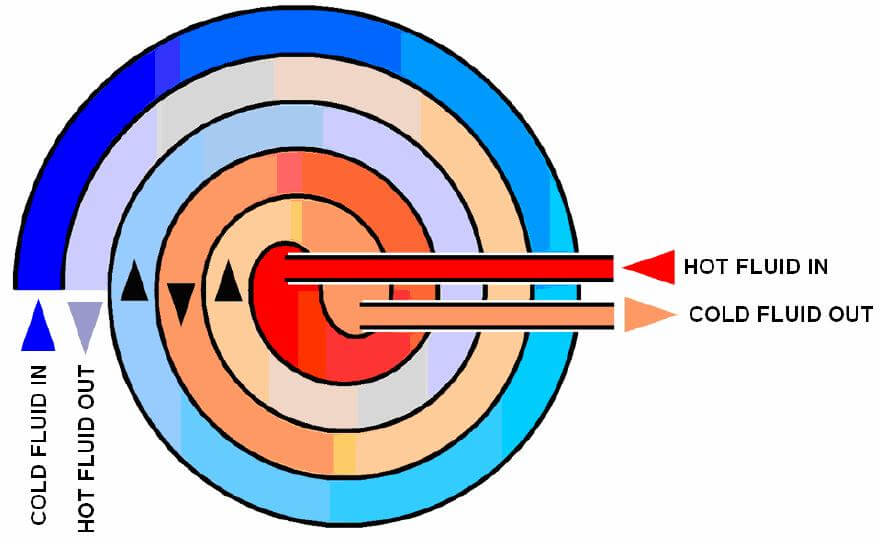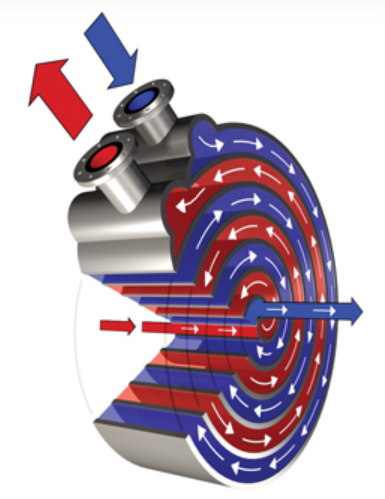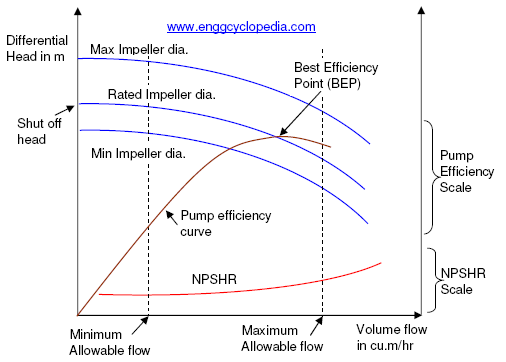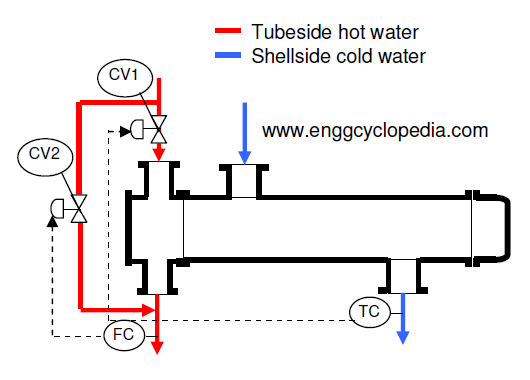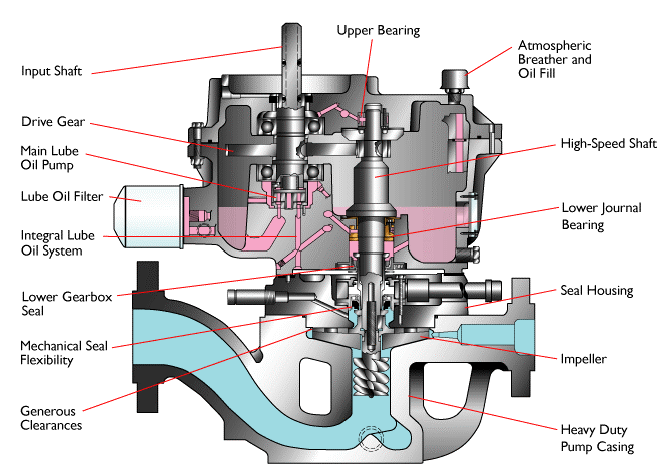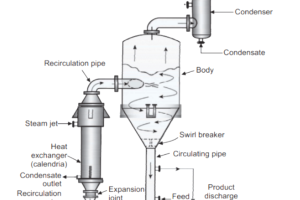A spiral heat exchanger is a type of heat exchanger that uses a spiral-shaped flow path to transfer heat from one fluid to another. The fluids flow in opposite directions through the spiral channels. The spiral shape of the channels increases the surface area for heat transfer and increases the efficiency of a heat exchanger.
Table of Content:
What is Spiral Heat Exchanger?
Spiral Heat Exchanger Working Principle
Applications of Spiral Heat Exchanger
What is Spiral Heat Exchanger?
Spiral heat exchangers are very basic in their structure. They consist of two separate spiral chambers as shown in the schematic above. These two chambers contain hot and cold liquids separated from each other by a spiral metal sheet. Heat transfer coefficients on both sides are high. The hot and cold fluid flows are countercurrent to each other through the exchangers.
The structure typically consists of:
Spiral-shaped tubes or plates: The spirals are the main component of these heat exchangers. They provide the flow path for the two fluids to transfer heat. Various materials such as metal, plastic, or composites are used to make spirals.
Casing: The casing provides support and protection for the spirals. It also helps to contain the fluids within the heat exchanger. It is typically made from metal, such as stainless steel, or composite material.
Connections: The inlet and outlet of the two fluids are connected to the spirals via connections. It can be flanged, threaded, or welded, depending on the specific design and application.
Gaskets or seals: Gaskets or seals are used to prevent fluid leakage between the casing and the spirals. They are typically made from elastomers, such as rubber or silicone.
Separator: The separator is used to prevent the two fluids from mixing. It ensures that the heat transfer process occurs only between the two fluids. The separator can be a tube sheet, a baffle plate, or a spiral separator, depending on the specific design.
Spiral Heat Exchanger Working Principle
The working principle of these exchangers is based on the transfer of heat from one fluid to another through spiral-shaped tubes or plates. Here's how it works:
- The two fluids, typically a hot fluid and a cold fluid, are directed through the spirals in a counter-current or co-current flow pattern.
- As the hot fluid flows through the spirals, it transfers heat to the cold fluid, which is in an adjacent tube. Heat transfer occurs through the walls of the spirals, which separate the two fluids.
- As the hot fluid loses heat to the cold fluid, its temperature decreases, while the temperature of the cold fluid increases. Thus the transfer of heat takes place in the spiral heat exchanger.
Applications of Spiral Heat Exchanger
Fouling is a chronic problem in the oil and gas industry, particularly for exchangers operating in harsh environments. At the inlet of process plant facilities in the oil and gas industry, accumulation of high sludge (high fouling) is a critical issue that may lead to inefficient performance of exchangers. The spiral heat exchanger is a reliable technology that can overcome such conditions.
For the Saudi Aramco Tanajib Gas plant project, they selected spiral heat exchangers for the three services here: Reclaimer loop heater, Slurry cooler, and Lean/rich ethylene glycol (MEG) exchanger. It was selected due to the high fouling phenomena that would be eliminated with this technology.
Advantages
- The spiral coil itself also contributes to the turbulent flow. Due to that, Spiral heat exchangers have high heat transfer coefficients.
- The compact design of spiral heat exchangers makes them ideal for applications where space is limited.
- These exchangers are capable of handling high-pressure and high-temperature applications, making them suitable for use in process industries.
- They have the self-cleaning ability. Due to its rotary current flow, fouling can be removed. Virtually no fouling or clogging in duties involving very dirty, highly viscous, or particulate media. This results in low operating costs.
- Easy-to-open design makes cleaning quick and simple. Also, the risk of fouling is greatly reduced. This ensures low maintenance costs.
- Reduced pipework and steel structures result in lower installation costs.
- The standard spiral heat exchanger is almost free of dead space.
Disadvantages
- The spiral heat exchangers have a more complex design compared to other types of heat exchangers, which can result in a longer lead time for manufacture and installation.
- They are not suitable for all types of heat transfer applications, and their use is typically limited to specific industries and processes.
